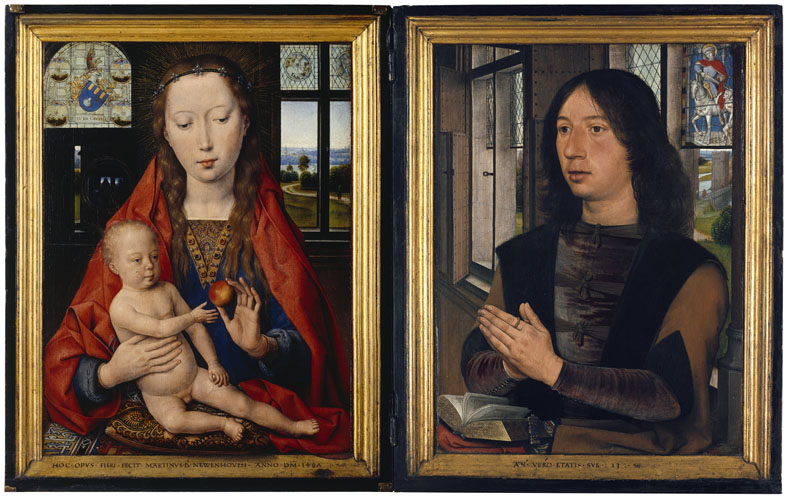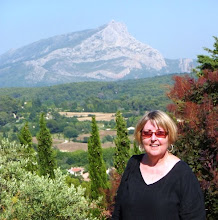Perhaps the most famous of the churches in Bruges is the Basilica of the Holy Blood. If you saw the movie, In Bruges, one of the characters goes to visit it. It is a small church and this is the entrance.
I don't take flash pictures in places where my flash (and those of thousands of other people) can damage the artwork, so these pictures are a little blurry.
The link above will take you to better pictures, but these serve to give you an idea of how brightly painted the interior is. The basilica dates back to the 12th century and houses a relic of the blood of Jesus Christ. Whether it or any other of the thousands of Christian relics, is real or not is always debatable, but for the faithful, it is real. I did get to see it that day.
As always, there is beautiful stained glass in any Gothic church.
The church was undergoing some serious renovation.
It looks like they are laying cables of many types.
These tombs are for the Duke of Burgundy who died in 1477 and his daughter, Mary, who died in 1482.
Beneath and around their tombs are the simple 13th and 14th century tombs of priests. I take lots of pictures of these because I prefer the simplicity of their artwork.
Here we have the same thing. Mary has dogs at her feet.
The Duke has lions. They are both depicted in the clothing of the time.
She has angels at the end of her tomb.
He has more lions.
In general, the churches in Europe do not shy away from expressing their political beliefs which tend to be liberal and humane. They stand on the side of humanity which resonates with me.
This painting is being restored.
These are some exterior pictures of the church.
We came in a side entrance and were starting to leave when I saw this area from the other side. I went to take a look and found these lovely early (probably 12th century) tombs.
Also for me there is always a chapel dedicated to the Virgin, and even though I am not Catholic, I always light a candle there and, I'll admit it, say a prayer for the safety and well-being of the women of the world. I don't know if it helps them, but it sure helps me.
We can't leave Bruges without a mention of St. John's Hospital. Built in the 11th century, it is one of Europe's oldest surviving hospital buildings. It grew as it was needed to care for sick pilgrims and travelers, added on a monastery and convent, and developed into a hospital with 8 wards built around a central building in the 19th century. By 1978, it was no longer functional as a hospital and was turned into a hospital museum that also houses some exquisite works of Hans Memling.
Some reviewers are disappointed to find that so much of the building is devoted to art, but that's why we went. Below are some of the Memling pieces that can be seen there.
This picture of the Shrine of St. Ursula is from the Wikipedia article.

And this is a good article about Hans Memling from Flemish Primitives which includes some of the pieces from the museum, like this diptych. Note that in this article, the museum is called the Sint-Jan museum.

I love the work of the Flemish painters of this era. I don't know what it is about them, but they really affect me. It's been that way since I first started studying art history and first saw pictures of their works in books. Of course, seeing them like that, or on this posting, can't compare with seeing them in person. They quite simply take my breath away.

































